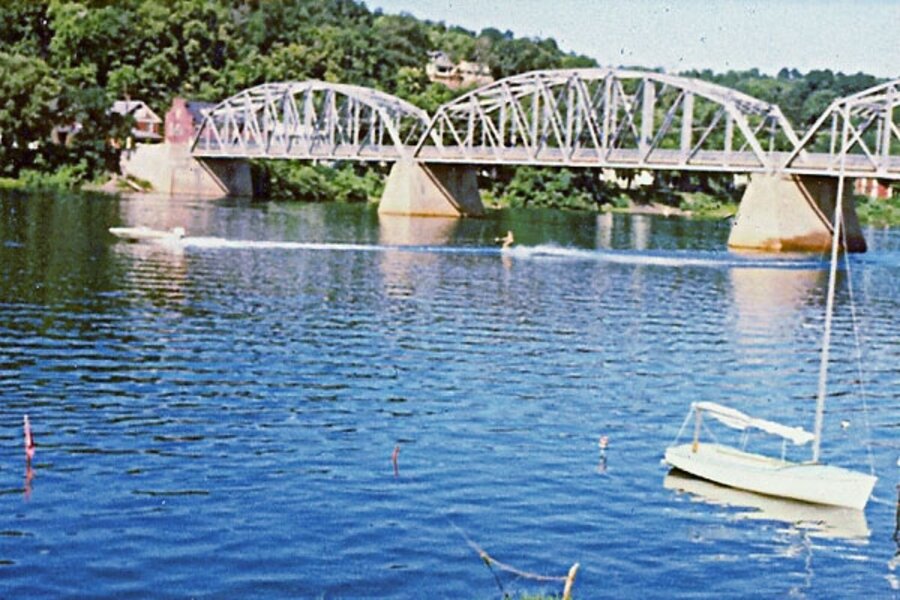Water and how we use it in the garden
Loading...
Welcome to “On Water," which will be a new part of the Diggin' It garden blog. Here's the back story.
Water is the heart of any civilization, any society, and, of course, any garden. I believe ancient Rome’s ability to acculturate those they conquered was less about soldiers and more about water engineering skills — think massive aqueducts, luxurious hot baths, and yes, flush toilets.
Because water is so basic to our gardens, I want to write about how we use it — from watering techniques to DIY construction, from water feature profiles to plant lists for specific purposes — plants that can thrive in water or enhance the garden around water features, and also plants that need little supplemental watering.
In general, water fascinates me. Perhaps it’s because a river runs through my family’s history.
I grew up in Lock Haven, Pa., where my grandmother declared that we were all “river rats” because five generations of us had lived in the same house on the banks of the Susquehanna River. The wild part of our garden — the part kids always prefer — ran right down to the water’s edge.
The Susquehanna gave me my first awareness of the rhythms and beauty of water in nature. From earliest childhood I knew the golden mists that hung over the quiet surface on early mornings, and the occasional floods that sent the river cascading down our cellar steps.
On the riverbank I learned my first lessons on ecology and pollution. The water was too clear, with very little vegetation or fish, because acidic upstream seepage from coal mines killed everything. Also, there was that sewage problem — the Susquehanna of the 1950s functioned as the repository for every small town’s effluent along its banks.
A favorite activity in my childhood — shared with three brothers — was to filch food dye, toss it into a third floor toilet, clatter down the stairs and race out the back door to the water’s edge, where we’d watch for the color spewing out the open sewer pipe. Oh, boy.
As a young woman I left that Hundred Years of Solitude watery abundance and traveled to the opposite extreme — more like Dune. In Northern California, I shared a country property with another family. Our water was stored in an 18-foot-tall redwood tank. Winter-flowing springs filled it to the top, but in the following dry summer, all we had was the contents of that tank.
We hauled our laundry to town; we showered (briefly) with buckets at our feet to catch the overflow; and we never, ever brushed our teeth to the merry sound of splashing water.
Even now, a faucet running uselessly makes me anxious.
Surrounded by the sere scents of California’s straw-colored fields, I first learned to garden. The vegetables survived on gray water. We hauled the shower buckets to our plot and, with a foot-thick straw mulch between the rows, we discovered just how little water we could use and still keep plants alive.
There was not much to spare for ornamental gardening, but I came to admire the drought-tolerant native plants, like California lilac (Ceanothus ssp.), which spangles the hillsides with blue flowers in spring and then hunkers down in summer, neatly curling its dark green leaves sideways to avoid the sun.
Out of this background of opposites, I’ve come to possess a strong water sensibility. I now live outside Eugene, Ore. The weather here combines the overflowing saturation of Pennsylvania — our average rainfall is 45 inches, arriving mostly in the winter months — and California-dry summers.
I believe that because water is a relatively cheap commodity, we, as a society, tend to not recognize its true worth. In my blog posts I will explore ways we can use water, conserve it, value it and enjoy it for all the wide-ranging gifts it brings.
Mary-Kate Mackey, co-author of Sunset’s Secret Gardens—153 Design Tips from the Pros and contributor to the Sunset Western Garden Book, writes a monthly column for the Hartley Greenhouse webpage (hartley-greenhouses.com) and numerous articles for Fine Gardening, Sunset and other magazines. She teaches at the University of Oregon’s School of Journalism & Communication.
Editor’s note: For more on gardening, see the Monitor’s main gardening page, which offers articles on many gardening topics. Also, our blog archive and our RSS feed. You may want to visit Gardening With the Monitor on Flickr. Take part in the discussions and get answers to your gardening questions. If you join the group (it’s free), you can upload your garden photos and enter our next contest. We’ll be looking for photographs of fruits. So find your best shots of summer’s blueberries, peaches, plums, etc., and get out your camera to take some stunning shots of early fall apples. Post them before Sept. 30, 2009, and you could be the next winner.





